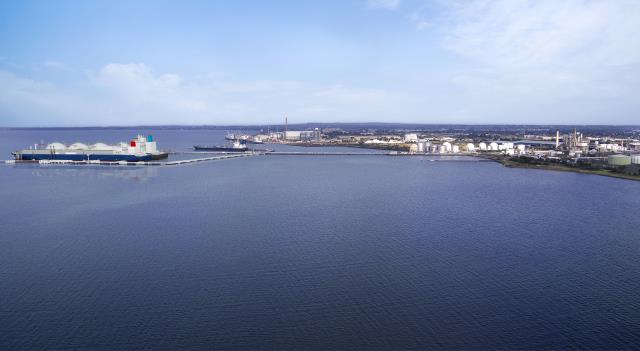A new report has claimed Viva Energy’s proposed floating gas terminal in Corio Bay would be a “persistent source of emissions” that would make it difficult for the City of Greater Geelong to reach its emissions targets.
The report, compiled by Ironbark Solutions and commissioned by ACF Community Geelong, claimed Viva Energy’s existing operations made up 35 per cent of all emissions in the City of Greater Geelong, which would increase to 52 per cent with the floating terminal.
The City of Greater Geelong has a community-wide target of net-zero emissions by 2035.
Geelong Renewables Not Gas spokesperson Tony Gleeson said the future emissions meant the project should be allowed to go ahead.
“The City of Greater Geelong is building a reputation for sustainability and is aiming to cut emissions to zero by 2035, but Viva Energy’s gas terminal project puts all that in jeopardy,” he said.
“Viva says it will use offsets to cancel the impact of a small part of their emissions, but carbon offsetting doesn’t reduce the carbon dioxide level in the air. It’s just an excuse to keep polluting.
“We already have too much carbon and the only solution is to reduce our use of fossil fuels and transition to cheaper, clean renewable energy as quickly as possible. That means rejecting this gas import terminal proposal from Viva Energy.”
Environment Victoria has previously accused Viva Energy of downplaying the climate impact of the terminal by excluding the emissions from transporting gas to the site in LNG tankers, and ACF Community Geelong said the report backed up those claims, claiming the total emissions impact would be almost 12 times higher than Viva’s estimate in its environment effects statement.
A Viva Energy spokesperson said the company had “taken every effort to minimise the environmental footprint of its proposed gas terminal, including addressing carbon emissions” and the report contained errors.
“In order to minimise emissions, Viva Energy plans to run the gas terminal in ‘open loop mode’. This means seawater is used to warm the LNG, avoiding the use of boilers in the regasification process. This means significantly less greenhouse gas emissions than under a ‘combined loop’ scenario, which this report suggests we will use,” they said.
“The report also includes emissions from transporting LNG. For the sake of transparency we included estimates of these in our report, however, under established reporting protocols, they are not included in emissions estimates for the gas terminal. If these emissions were added to the Geelong emissions tally, they would be counted twice.”
The spokesperson said there was “a very rigorous process underway” to assess the proposed terminal.
“Victorian government regulators will review our application, and we have to prove that it can be operated safely and without hurting the environment. If we can’t do that, we won’t get a licence to operate,” they said.
“We have had 16 studies conducted by independent experts in different areas … these independent scientific studies estimate emissions from the gas terminal would be around half of one per cent of Victoria’s total emissions.
“People also need to recognise that the gas coming to our terminal would be replacement gas to meet existing demand. It would simply be gas brought in from other locations to maintain supply to Victorians as local supplies of gas run out.”







